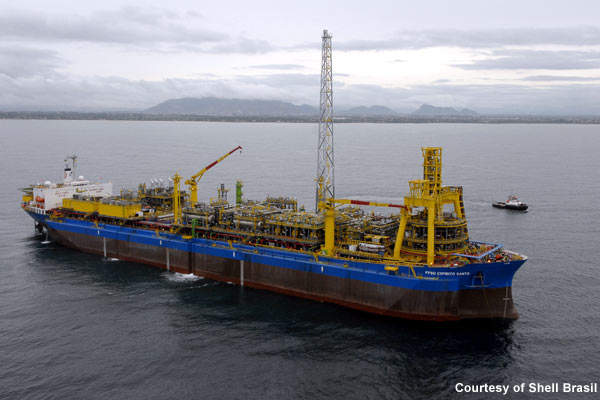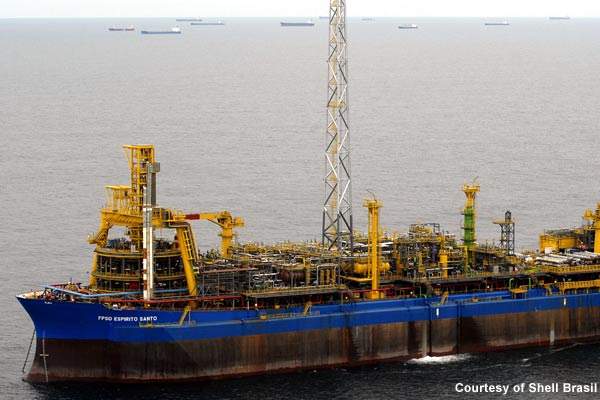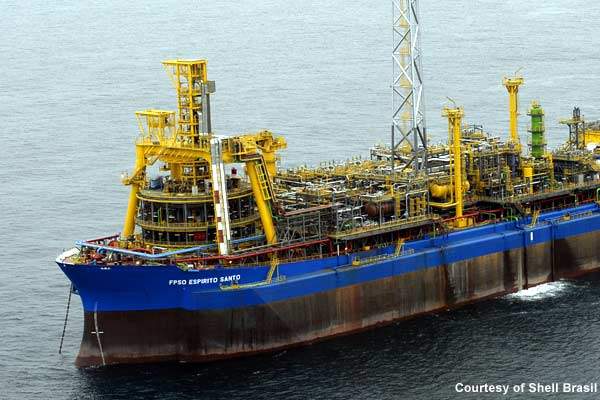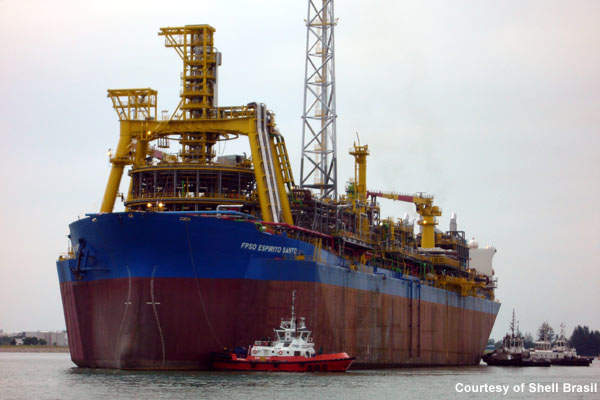Also called BC-10, Parque das Conchas is in the north of the Campos Basin, offshore Espirito Santo state, Brazil. The project includes five fields, namely Ostra, Argonauta B-West, Abalone, Argonauta O-North and Nautilus. Phase one of the project involved the development of Abalone, Ostra and Argonauta B-West. Production from phase one began on 13 July 2009.
The first discovery well was drilled in 2000 and the final discovery well in 2003. The fields were declared commercially viable in 2005 after the exploration and drilling of 13 wells involving technological and engineering studies. The decision to invest in the fields was made in October 2006.
The fields have estimated reserves of 400 million barrels of heavy crude oil. Phase two includes the development of Argonauta O-North, which came online in October 2013.
Phase three comprises five production wells in Massa and O-South fields and two water-injection wells in Massa field. Production from phase three began in March 2016.
Shell Brasil is the operator and has a 50% interest in the Parque das Conchas project. The other stakeholders are Petrobras, which holds 35%, and ONGC Campos, which holds 15%.
Location
Parque das Conchas is located 110km from the coast. It lies in water depths between 1,500m and 2,000m in the Campos Basin, which is rich in petroleum. Heavy oil resources are believed to be available at about 2km depth. The basin has a total area of 100,000km² and the reserves are estimated to be 101.53km³ of natural gas and 1.1 billion m³ of condensate and oil. A total of six discoveries have been made in the BC-10 block.
Drilling
Drilling and completion of the wells was carried out using a floating rig surface blow-out preventer (BOP). The wells were produced through deepwater trees. BOP allowed the use of a generation three rig, which was cheaper than using a generation five rig.
The drilling system included a 135/8in high-pressure riser, which opened into a shut-in device on the sea floor, and a standard surface BOP stack, which completed the wells. A centrally located floating production storage and offloading (FPSO) vessel connects with the subsea wells for production.
The double-hulled, 330m-long FPSO vessel can process 100,000boe/day and has a storage capacity of two million barrels of oil for shipment to shore. It also has a natural gas processing capacity of 50 million ft³ a day.
The vessel required substantial heat delivery and power systems for driving seabed lift equipment and processing heavy crudes ranging from 16° to 24° API. The oil from the reserves is driven about 1,800m to the FPSO vessel using 1,500hp electric pumps. FPSO supplies power to the deepwater pumping systems through electrical umbilical cables to keep the heavy oil flow. It has a power generation capacity of 68MW.
Subsea system
The subsea activity was a challenge and required high-performance equipment in deeper water. An efficient subsea system was required to combine production from multiple fields. It was also required to perform gas and oil separation and minimise slugging and hydration risks.
Developed by FMC, the first enhanced vertical deepwater tree (EVDT) system was installed at the BC-10 field. The system is capable of installing and operating equipment at a depth of 10,000ft and a pressure of 10,000psi.
The subsea systems for phase one involved ten EVDTs with FMC subsea control modules, two production manifolds, two artificial lift manifolds and six separation boosting systems (ESP). It also involved the installation of 15 pipeline end terminations (PLETs), 26 rigid jumpers, 18 subsea control modules and ALM, 36 steel hydraulic flying leads, 42 electric flying leads, seven umbilical termination assemblies (UTA), eight multi-phase flowmeters (MPFM), topside control systems (HPU and MCS), a workover riser and an intervention and workover control system (IWOCS).
Field development
The development of BC-10 is based on subsea oil and gas separation and subsea pumping. Phase one involved nine producing wells and one gas injector well. Shell used advanced technology to cope with the challenges of the project.
The project needed an economic design for linking productions from different reservoirs to the central facility. It involved a vertical caisson separator system developed by FMC and Shell. The separator had an artificial lift (AL) and subsea gas and oil separation system. A 300ft caisson, which included a cylindrical cyclonic gas and liquid separator and a 1,500hp electrical submersible pump, was driven into the seabed.
The field also required extended horizontal drilling to improve production. Several buoyant and flexible steel pipes were developed to anchor FPSO in place. Lazy-wave steel-catenary risers (SCRs) were designed to carry production from subsea wells to the FPSO. Flaring and CO2 emissions were reduced by pumping natural gas produced during exploration back into the Ostra field. A gas export pipeline system was also deployed at the field.
Contracts
The FPSO vessel was built by SBM in Singapore and delivered to the Brazilian project in late 2008. It is operated by BDFT, a joint venture between SBM Offshore and MISC. In 2006 the contract for the subsea system was awarded to FMC Technologies.
Global Santa Fe’s Arctic 1 drilled the development wells. In 2007 VectoGray, a GE Oil and Gas business company, was awarded a contract for the MS-700 slimbore subsea wellhead systems and 42in liners.
Subsea 7 was awarded a contract for offshore installations, which were completed during third quarter of 2009. The scope of work included the installation of steel pipelines, fabrication and installation of steel lazy-wave risers, as well as other installations such as manifolds and rigid jumpers.
V&M do Brasil provided anti-corrosion and flow assurance coating requirements for the project. The hybrid subsea pump and steel tube production control umbilicals were supplied by Oceaneering. Transocean and Halliburton were also involved in the project.











